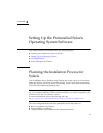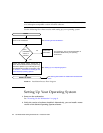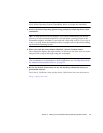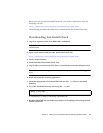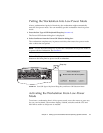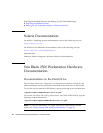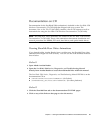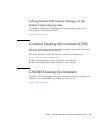
16 Sun Blade 2500 Getting Started Guide • December 2004
Power Management Features
Sun Microsystems is an Energy Star
®
partner. Configurations of this product that
bear the Energy Star mark, meet or exceed the Energy Star guidelines. For
information about which configurations are Energy Star compliant, go to:
http://www.energystar.gov/index.cfm?=computers.pr_computers/
Select the links: Products→Computers→Product List
The Power Management™ software that is integrated with your Solaris Operating
System improves the energy efficiency of your workstation. Internal subsystems
enter a low-power mode after a specified period of inactivity (the default period is
30 minutes). Power is returned to subsystems on an as-needed basis.
While in low-power mode, your workstation retains network-awareness and
responds to network traffic. After responding to the network traffic, the subsystems
re-enter low-power mode after the specified period of inactivity. For details and
information on how to change the power management settings on your workstation,
refer to the “Solaris User Collection” document, Using Power Management (see
“Solaris Documentation” on page 20).
The power-indicator LED in the center of the front panel Power button has three
states that indicate the power status of the workstation, as described in
TABLE 2-2.
TABLE 2-2 Power-Indicator LED Status
LED Activity Meaning
LED off System power is off or the workstation is booting up.
LED blinking All internal subsystems are in the lowest possible power
consumption mode for this workstation.
Note: Some hardware components and software drivers do not
support the workstation’s lowest possible power consumption
mode. When this occurs, the power indicator LED does not blink.
LED on Full power is on in one or more of the internal subsystems and the
system self-test has completed successfully.






